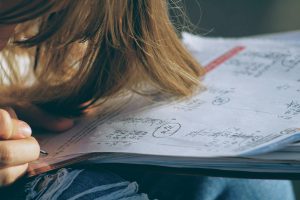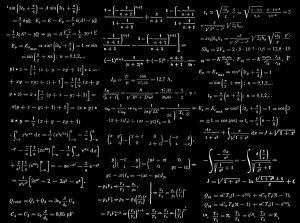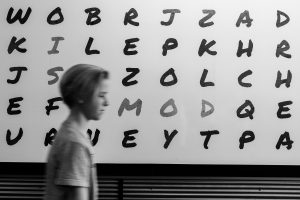Creative Ways to Teach Math Concepts Using Household Items

Introduction
Mathematics is a subject that tends to intimidate many children. As parents, we are often concerned about how to make math interesting and accessible for our children. The good news is that you don’t need expensive gadgets or complicated tools to teach math concepts effectively. In fact, you can use everyday household items to make learning math fun and engaging for your child.
In this blog post, we will explore some creative ways to teach math concepts using household items. By incorporating these simple teaching aids for maths into your child’s learning routine, you can help them develop a strong foundation in mathematics while making the process enjoyable and relatable.
So let’s dive in and discover the exciting world of maths teaching methods using everyday items!
Counting and Sorting: Beans, Buttons, and Coins
Counting is one of the fundamental concepts in mathematics. It forms the basis for addition, subtraction, multiplication, and division. You can use objects like beans, buttons, or coins to teach counting in a hands-on way.
Create sets of these objects and ask your child to count aloud as they group them. This helps reinforce the concept of one-to-one correspondence. For example, if you have five beans in one set and three beans in another set, your child can count both sets together to get the total.
Measurement with Non-Standard Units: Paper Clips, Pencils, and Blocks
Measurement is another essential skill in mathematics. You can introduce measurement concepts using non-standard units like paper clips, pencils, or blocks. This helps children understand the concept of length and introduces vocabulary such as “longer,” “shorter,” “taller,” and “smaller.”
Ask your child to compare the length of different objects using these non-standard units. For example, they can measure the length of a book using paper clips and compare it to the length of a pencil. This hands-on approach makes measurement relatable and fun.
Geometry Exploration: Cereal Boxes, Jars, and Balls
Geometry is a branch of mathematics that deals with shapes and their properties. You can explore geometry concepts using household items that your child encounters every day. For example, cereal boxes are rectangles, jars are cylinders, and balls are spheres.
Encourage your child to identify these shapes in their environment. They can also create shapes using craft sticks or Play-Doh to learn about vertices, edges, and faces. By relating geometry to familiar objects, you make it easier for your child to understand and appreciate the subject.
Fractions with Paper Plates
Fractions can be a challenging concept for children to grasp. You can use paper plates to visually demonstrate fractions in a tangible way. Cut the paper plates into halves, thirds, or quarters to show how parts make up a whole.
Ask your child to identify different fractions by looking at the divided paper plates. They can also explore equivalent fractions by comparing different ways to divide the plate. This hands-on approach helps children develop a deeper understanding of fractions and how they relate to whole numbers.
Pattern Recognition: Beads, Buttons, and LEGO Bricks
Patterns are an important aspect of mathematics. They help children develop logical thinking skills and enhance their problem-solving abilities. You can use beads, buttons, or LEGO bricks to create patterns and challenge your child to identify and extend sequences.
Start by creating simple patterns and ask your child to continue the sequence. For example, you can create a pattern using red, blue, and yellow beads, and ask your child to add the next few beads. This activity helps develop pattern recognition skills while making math enjoyable and engaging.
Data Analysis with Surveys: Tally Marks and Pictographs
Data analysis is a crucial skill in mathematics. You can introduce your child to data analysis by conducting surveys on topics that interest them. For example, ask them about their favorite colors or snacks and record the responses using tally marks or pictographs.
After collecting the data, help your child analyze the results. They can compare the number of votes for each option using terms like “greater than” and “less than.” This activity not only teaches data analysis but also introduces important concepts like comparing quantities and interpreting graphs.
Real-Life Math Scenarios: Grocery Shopping and Budgeting
Mathematics is not just an abstract subject; it has practical applications in everyday life. You can help your child make real-life connections by simulating scenarios like grocery shopping or budgeting.
When you go grocery shopping, involve your child in calculating the total cost of items based on their prices. You can also give them a budget for planning a party and ask them to create a list of items within that budget. These activities make math relevant and show how it applies to everyday situations.
Tactile Math Activities: Textured Items for Sorting and Matching
For younger children or those with visual impairments, tactile math activities can be particularly helpful. Use textured items like felt shapes or laminated strips for sorting and matching activities.
Ask your child to sort the textured shapes based on their attributes, such as color or size. They can also match shapes with corresponding textures to develop their visual memory and cognitive abilities. These hands-on activities provide a multi-sensory approach to learning math.
|
Math Concept |
Household Item |
Activity Description |
|---|---|---|
|
Counting & Sorting |
Coins, buttons, beans |
Group items into sets and count aloud |
|
Measurement |
Paper clips, pencils, blocks |
Measure lengths using non-standard units |
|
Geometry |
Cereal boxes, jars, Play-Doh |
Identify shapes or create 3D models |
|
Fractions |
Paper plates |
Cut plates into halves/quarters for fraction visualization |
|
Pattern Recognition |
Beads, LEGO bricks |
Create and extend patterns |
|
Data Analysis |
Tally marks on paper |
Conduct surveys and compare data |
|
Real-Life Scenarios |
Grocery items |
Calculate totals or plan budgets |
|
Tactile Math Activities |
Felt shapes, laminated strips |
Match textures or sort objects |
Conclusion
By using creative teaching aids for maths and incorporating everyday household items, you can make math concepts more accessible, engaging, and enjoyable for your child. Counting and sorting objects, exploring shapes, measuring with non-standard units, and analyzing data are just a few ways to make math come alive in your home.
Remember, learning math is not about memorizing formulas or solving complex equations; it’s about understanding concepts and developing problem-solving skills. By using these creative methods, you can help your child build a strong foundation in mathematics while fostering a love for learning.
If you’re looking for a structured program that combines hands-on learning with proven teaching methods, consider enrolling your child in SIP Abacus. SIP Abacus uses the abacus tool and visualization techniques to teach mental math skills to children aged 6 to 12. Their programs focus on developing strong mental math abilities, improving concentration and attention span, enhancing overall intelligence, boosting confidence, and providing a competitive edge in exams.
Teaching math concepts using household items doesn’t have to be complicated or expensive. With a little creativity and resourcefulness, you can turn everyday objects into powerful teaching aids for maths. Counting and sorting objects, exploring shapes, measuring with non-standard units, creating patterns, analyzing data, and relating math to real-life scenarios are just a few ways to make math fun and relatable for your child.
If you’re looking for a structured program that combines hands-on learning with proven teaching methods, consider enrolling your child in SIP Abacus. Their world-class skill development programs use the abacus tool and visualization techniques to unlock the mental potential of children. Through fun learning methodologies, SIP Abacus helps children develop strong mental math abilities, improve concentration and attention span, enhance overall intelligence, boost confidence, and provide a competitive edge in exams. Studies have shown that children who complete the SIP Abacus program perform significantly better in math and reading at school.
So, take a step towards empowering your child’s mathematical journey. Explore the world of math using everyday items and give your child the tools they need to excel in this critical subject. With creativity, patience, and the right teaching methods, you can make math an enjoyable adventure for your child.



